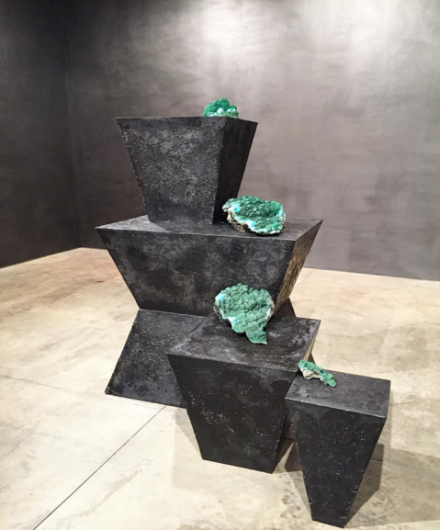
Teresita Fernández, Viñales (Reclining Nude) (2015), Rae Wang for Art Observed
Conceptual artist Teresita Fernández continues her incisive investigations into the connections between the subterranean and the cosmos, materialization and transcendence in her new solo exhibition, on view at Lehmann Maupin in New York. Fernández’s work often focuses on the transformation of unconventional materials into malleable forms, imbuing them simulataneously with a human narrative and historical geography. Here, the artist draws in on the uncanny semblance between the interiors of malachite mineral rocks originating from the Democratic Republic of Congo, and the karstic landscape of the Viñales Valley in rural Cuba.
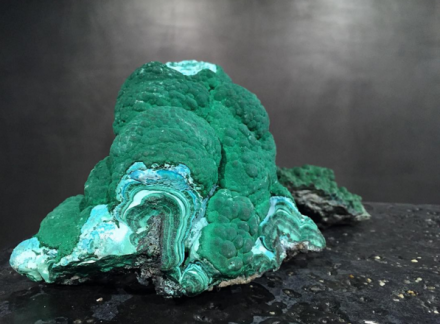
Teresita Fernández, Viñales (Reclining Nude) (detail) (2015), via Rae Wang for Art Observed
Given the recent restoration of diplomatic relations between the U.S. and Cuba, it seems an apt moment for Fernández to more deeply engage with her Cuban roots. Born in Florida, her family fled Castro’s regime six months after the Cuban Revolution, with the artist spending her childhood in the atelier of her great aunts and grandmother, all of whom were trained as skilled seamstresses in Havana. Instead of overt nostalgia, however, Fernández explores the elemental aspects of her heritage. Variants of malachite can be found in various pockets around the world, thus it is significant by way of its universality, or perhaps, in turn, by its shared sites of distribution.
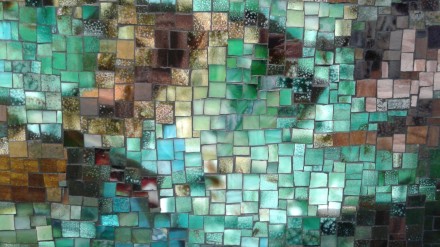
Teresita Fernández, Viñales (Aerial) (detail) (2015), via J. Holburn for Art Observed
The enchanting mosaic wall assemblages are composed of glazed ceramic tiles, depending on the ambulatory spectator to experience ephemeral transitions of light and color from different vantage points. At a distance these works are luminous landscapes, yet in close proximity turn to culminations of rich color, with each irregular tile offering distorted reflections of the spectator and the surrounding space. It is through this disorientation that the duality between artifice and nature begins to emerge.
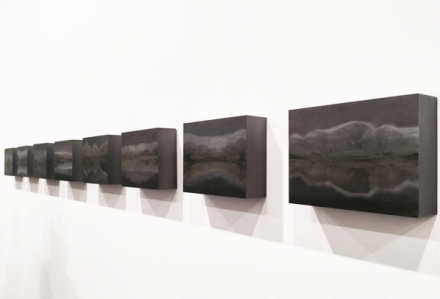
Teresita Fernández, Viñales (8 Nights) (2015), via Rae Wang for Art Observed
The opulence of the larger pieces are tempered by smaller ink and graphite works on wood panels: Viñales (8 Nights) and Viñales (Cervix), which appear as miniature horizon lines, passages and voids, hung uniformly beside one another. Each series takes abstract landscape to divergent ends of amplified and contained interactions, culling together different forms of matter, through which the micro and the macro are closely aligned.
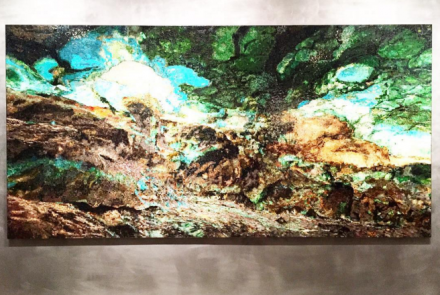
Teresita Fernández, Viñales (Aerial) (2015), via Rae Wang for Art Observed
The sculptural pieces,composed of wax, bronze and malachite and placed on angular concrete plinths appear as fertile growths, exposed in their encrusted flesh. That they are not encased in a museological display allows the observer to engage intimately with their tiny fibrous qualities, presenting natural forms as conceived through a mysteriously sensual figure, an abstract body shimmering in the light.
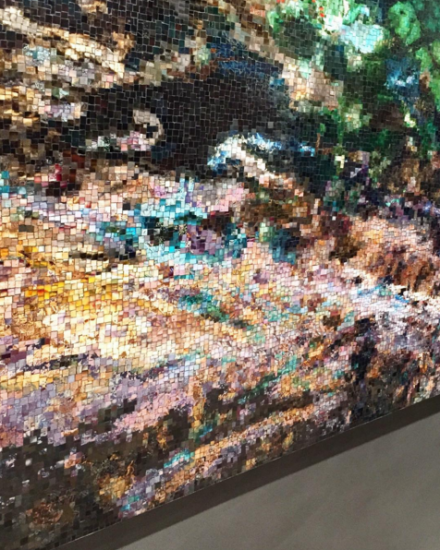
Teresita Fernández, (Installation View), via Rae Wang for Art Observed
The absence of natural light was surely a factor in the conception of this exhibition, particularly given the artist’s previous projects this year, including the public art installation Fata Morgana in Madison Square Park (on show until end of 2015) and her immersive show As Above So Below at MASS MoCA earlier this year. Her last show at Lehmann Maupin’s Chrystie Street space Night Writing powerfully utilized the shifting sunlight streaming from the ceiling. In this instance Fernández works within the bounds of an enclosed space, and while the exhibition is perhaps not fully immersive as others, this alchemy of coexisting realms presented to us is uniquely experiential.
— J.Holburn
Read more:
Teresita Fernández at Lehmann Maupin [Exhibition Site]



